Glass for reflectivity
Elevate aesthetics and performance
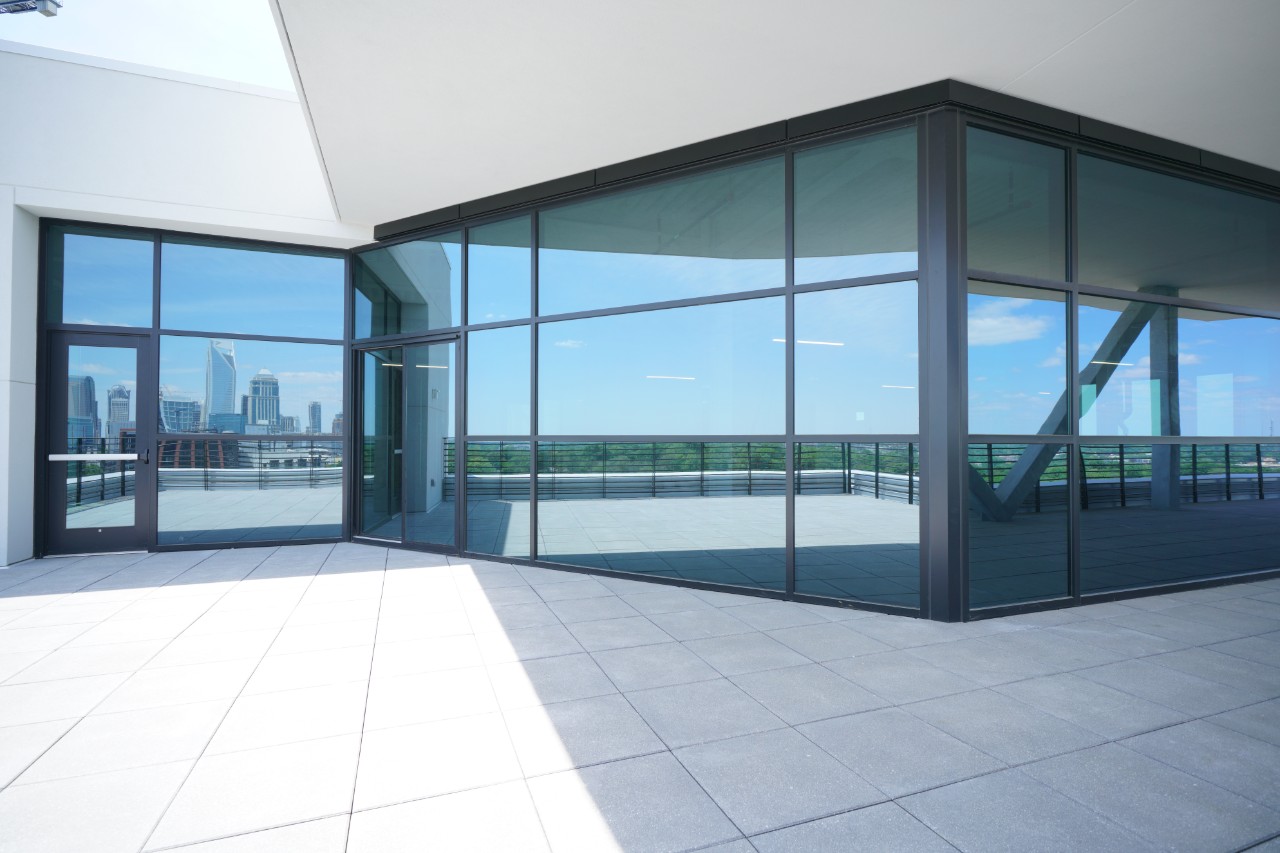
With thoughtful application, glass for reflectivity can allow a façade to tell a captivating story and enhance architectural design in key ways. Reflective glass can help create a dynamic exterior that transforms throughout the day with lighting and weather shifts. As it responds to changes in lighting conditions, glass for reflectivity can balance transparency and privacy for occupants. Glass for reflectivity not only adds a touch of modern elegance but also can help optimize solar control for comfortable interiors.
What are the benefits of glass for high reflectivity?
Glass with an outdoor reflectivity of 25% or more is often classified as highly reflective. Highly reflective glass has several benefits.
Dynamic appearance
Glass with high reflectivity can create a stunning mirrored effect on the façade, offering a bright and vibrant appearance. The exterior appearance shifts with changing daylight and weather conditions, reflecting a blue morning sky, late afternoon cloud cover or anything in between. Highly reflective glass can take on the aesthetics of a landscape – from a bustling street to a lush forest – making a building seemingly mostly disappear into its surroundings.
Vision-to-spandrel blend
Highly reflective glass can unite aesthetics and functionality by elevating the vision-to-spandrel blend on a building façade. The right amount of external reflectivity can create a seamless transition from transparent vision areas to opaque spandrel panels.
Privacy
Highly reflective glass can help provide privacy to building occupants throughout the day. In buildings with heightened privacy concerns – such as hotels, office meeting rooms or healthcare facilities – highly reflective glass can help achieve privacy from the outside looking in while preserving views from inside looking out.
Solar control
Glass for reflectivity can help achieve solar control by reducing the amount of heat entering a building. This can result in a more comfortable interior, curbing the need for excessive air conditioning and thus lowering energy consumption.
Our glass for reflectivity product range:
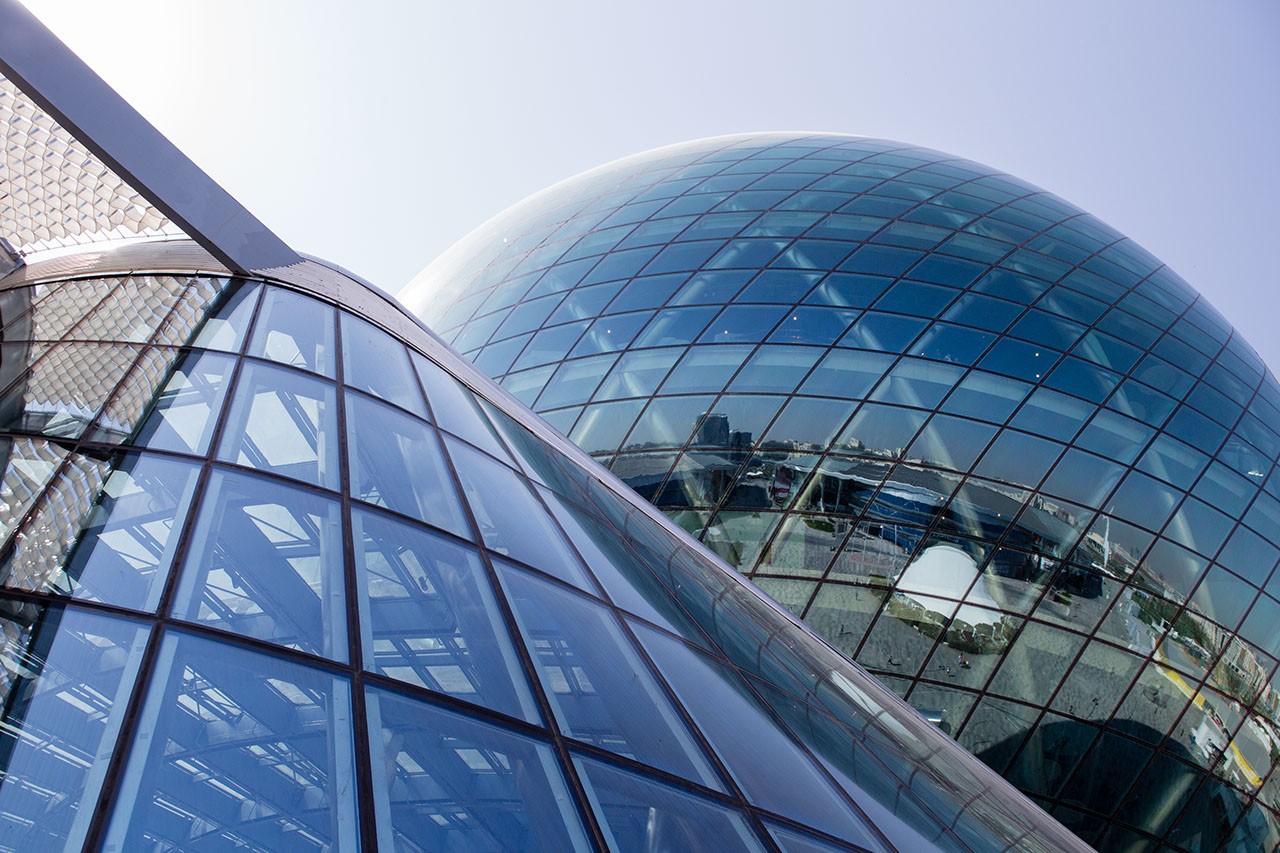
Our Guardian SunGuard™ glass products offer different levels of solar control and light transmission, and various aesthetic options. Our range of mid- (≥18%) and high-reflectivity (≥25%) glass allows you to select the level of reflectivity that best suits your project.
What is glass reflectivity and how is it measured?
To understand glass reflectivity, we need to start with understanding how visible light interacts with glass and coatings. Visible light is a small part of the electromagnetic spectrum visible to the human eye.
Energy, heat and light constantly flow away from the sun into Earth’s atmosphere in the form of electromagnetic radiation (EMR). The electromagnetic spectrum is comprised of waves of different frequencies and wavelengths. The electromagnetic waves that make up solar energy are ultraviolet radiation (UV), visible light and infrared radiation.

Interactions with matter (like glass) alter light. Glass reflectivity refers to the measure of how much visible light is bounced off the glass surface. This is part of the RAT (Reflection + Absorption + Transmission) equation, which accounts for 100% of visible light that is either reflected, absorbed or transmitted in different proportions, depending on the type of glass.
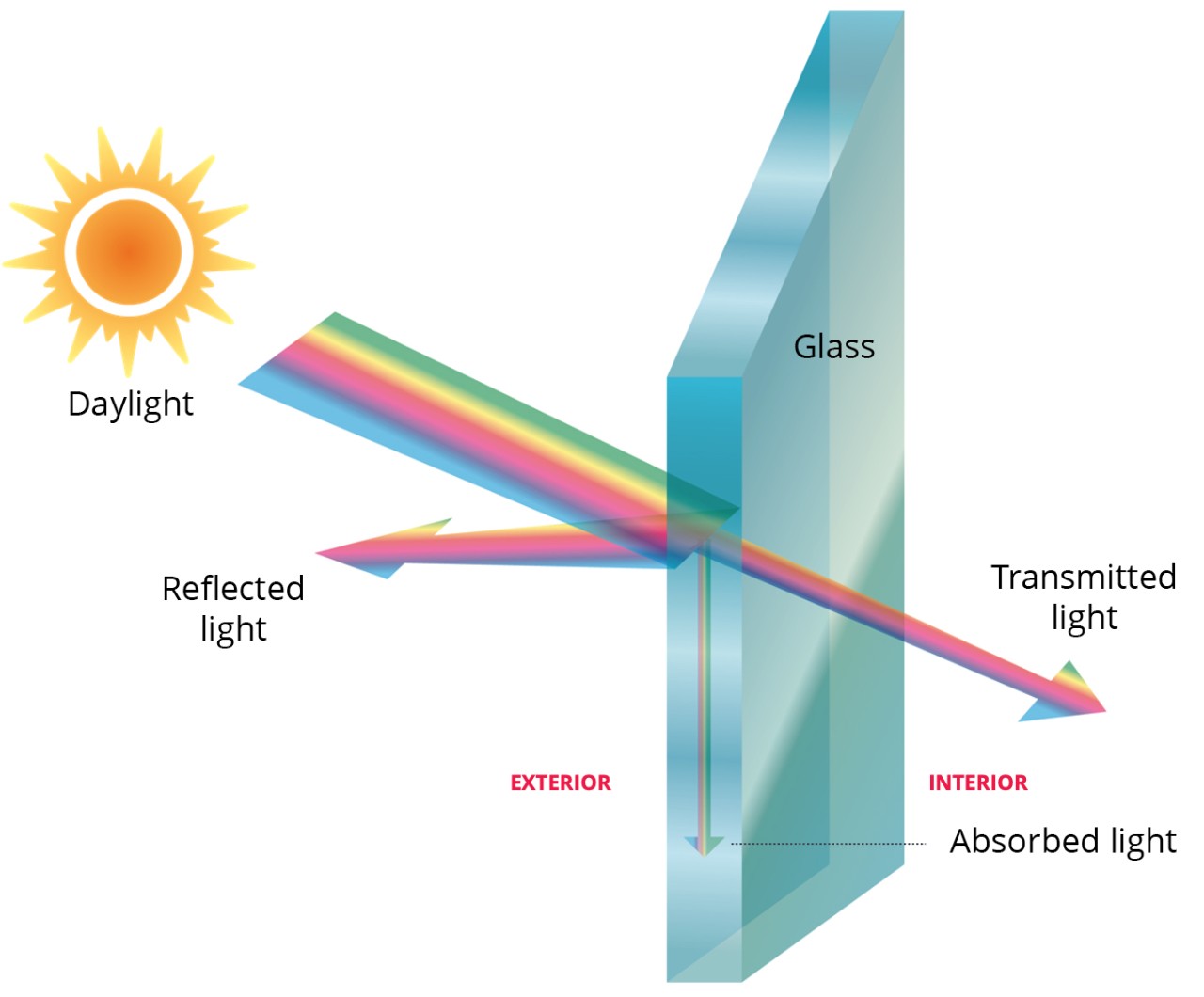
The reflectance value provides insight into how the glass will interact with natural and artificial lighting, influencing factors such as visibility and privacy.
The higher the reflectance value, the more the glass will mirror its surroundings – especially during the day or when lighting conditions outside are brighter than those inside. The lower the percentage, the more transparent the glass will appear when comparing options with similar levels of visible light transmission.
Guardian Glass designs low-E coatings that impact the appearance, light transmission and reflectivity of the glass. A multitude of coating formulations, glass substrates and overall glazing makeups offer a range of aesthetic and performance options to suit individual project goals and occupant needs. Our solutions cover a full spectrum of reflectivity out from 6% (low) to 36% (high). It is important to consider all elements of design when selecting the level of reflectivity for your project.
What is reflected color?
Glass coatings influence the reflected appearance of a façade. Reflected color refers to the hue you see when light interacts with a glass surface and certain wavelengths of visible light are reflected while others are absorbed. For example, a glass that absorbs green, yellow, and red wavelengths and reflects blue wavelengths will appear blue to the eye.
Our low-E coated glass solutions offer a wide variety of options from neutral to blue and green hued, available on clear or on tinted glass for a wider range of aesthetic options.
What is mid-reflective glass?
Glass with an outdoor light reflectivity of 18-24% can be considered mid reflective. Mid-reflective glass is ideal when a façade with a slightly reflective appearance is desired, with no major privacy concerns. This range of reflectivity can bring a brighter appearance to the glass façade when viewed from the exterior during daytime conditions, providing façades with a vibrant and crisp aesthetic, while also allowing natural daylight into the space.
Why does indoor lighting matter?
Many factors can impact our perception of glass reflectivity. When it comes to privacy and reflectance, it’s important to consider the balance between interior and exterior lighting conditions. What we see when we look at glass depends on where the light is brightest, whether we’re inside looking out or outside looking in.
If it’s night and you’re outdoors looking into a well-lit interior, you’ll easily see into the building because you’ll get a transmitted view. The same goes for when you’re inside a building looking out on a bright, sunny day – you’ll get a clear transmitted view of the outdoor scenery.
If you’re outside on a bright, sunny day looking into a darkened building, you’ll mainly see a reflected view of the outdoor scene. Likewise, if you’re inside with the lights on at night, you’ll see a reflection of the interior. With too much light in the room, interior reflections will likely disrupt your view.
On overcast days, or in elevations with less direct exposure to the light source, the glass may not be as noticeably reflective.
Want to know more about glass and its properties?
Guardian™ Glass offers you a wealth of technical notes, tools and online learning to enhance your knowledge about glass and help you specify the most appropriate glass for your project. Discover our specification tools on the Resource Hub!
Applications for reflective glass
Glass with reflectivity can be used to enhance both the aesthetics and performance of a project.
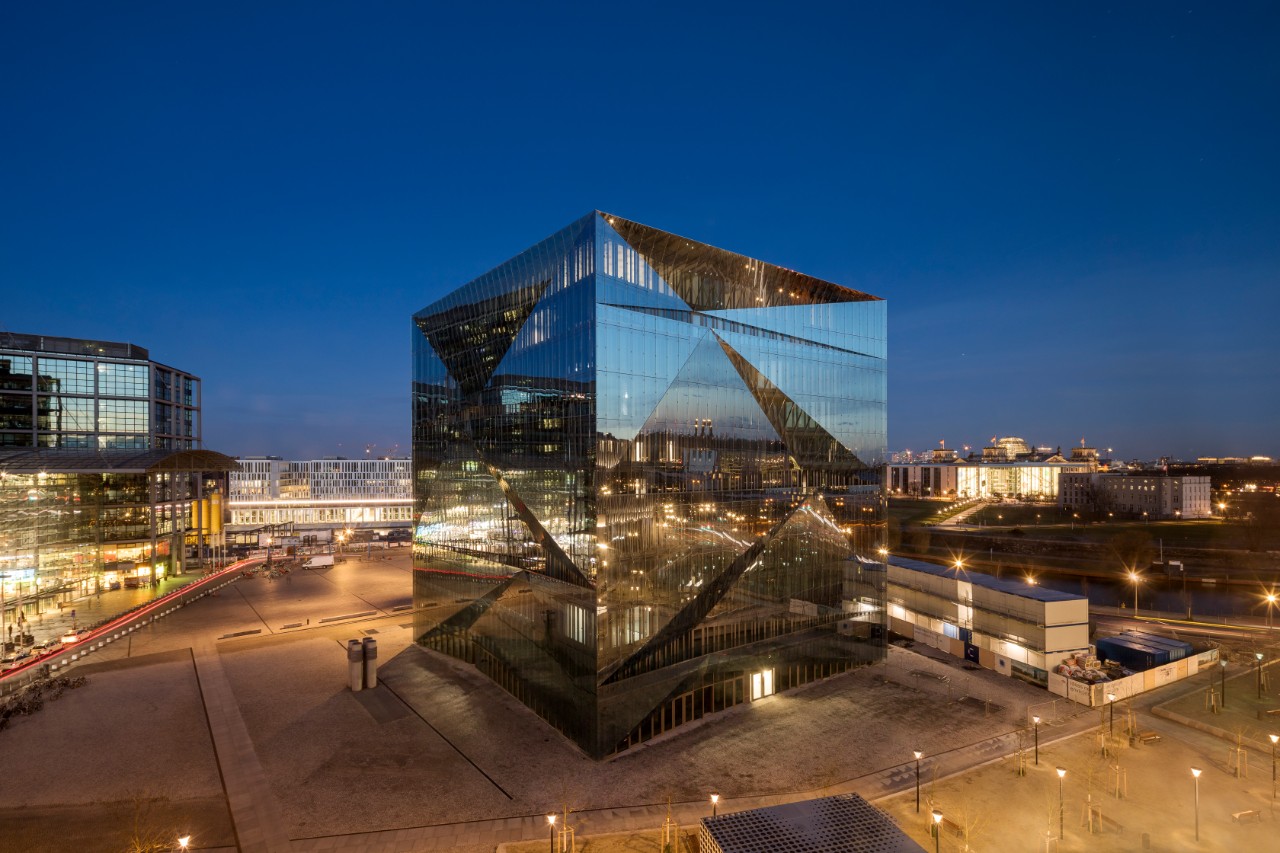
Curtain walls
Glass for reflectivity can create captivating curtain walls. Low-E coatings can control reflectivity to add a touch of elegance to curtain walls while allowing natural light penetration and energy efficiency.
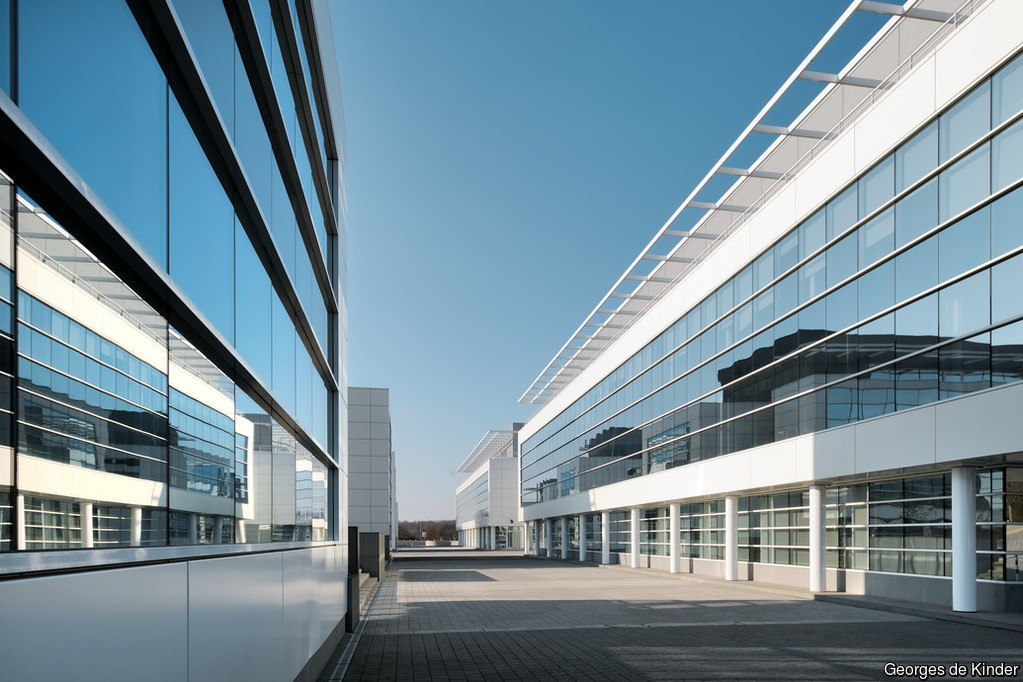
Spandrel
Reflective glass can help create a seamless vision-to-spandrel blend for architectural continuity. Reflective vision glass can also be used to create visual contrast to the spandrel.
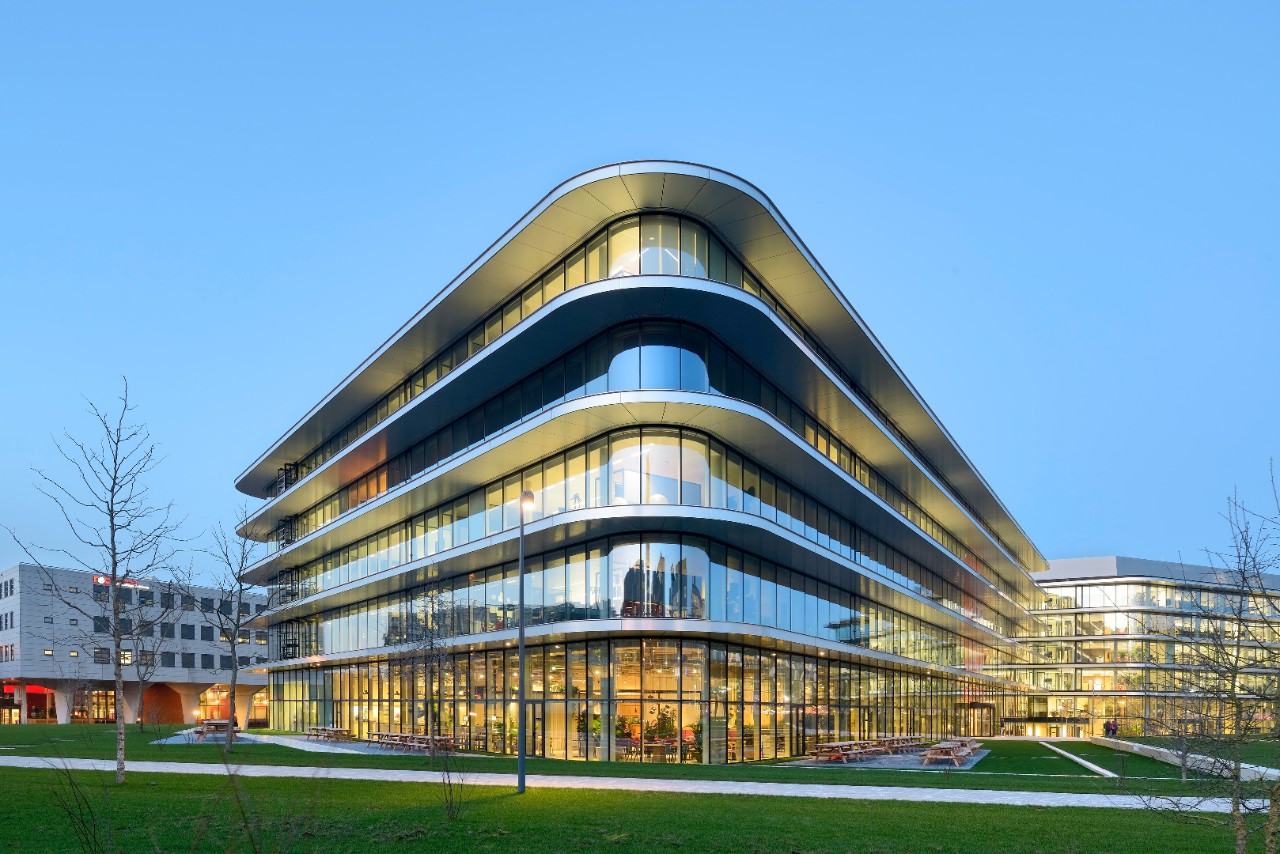
Curved glazing
Curved glass opens opportunities to create spectacular, dramatic buildings – especially when combined with glass that captures reflections of the sky and other surroundings.
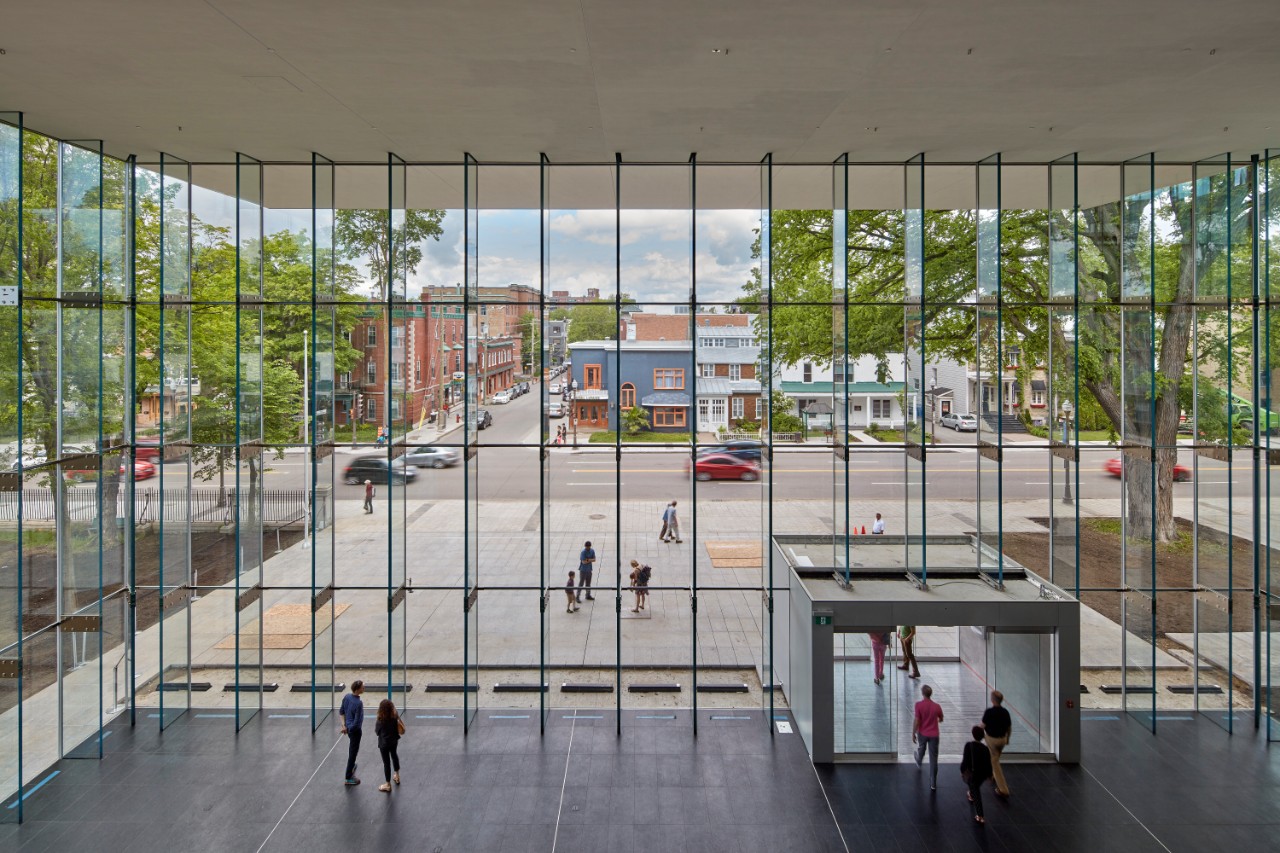
Oversized glazing
Glass for reflectivity can be used for oversized glass panels to meet design goals for performance and aesthetics.
Projects made possible thanks to Guardian Glass solutions for reflectivity.
Want to see more architectural projects made with reflective glass? Visit our project section.




